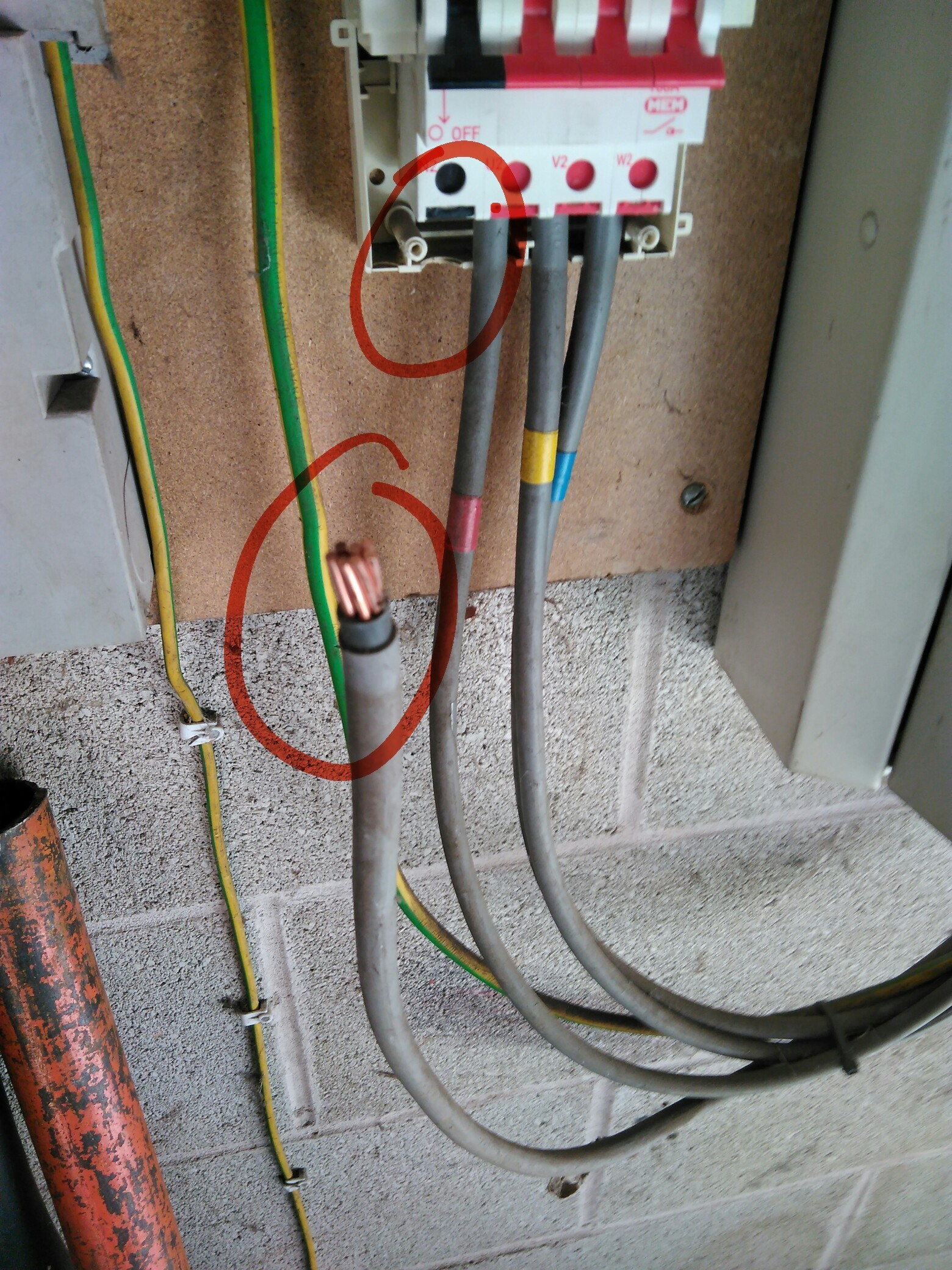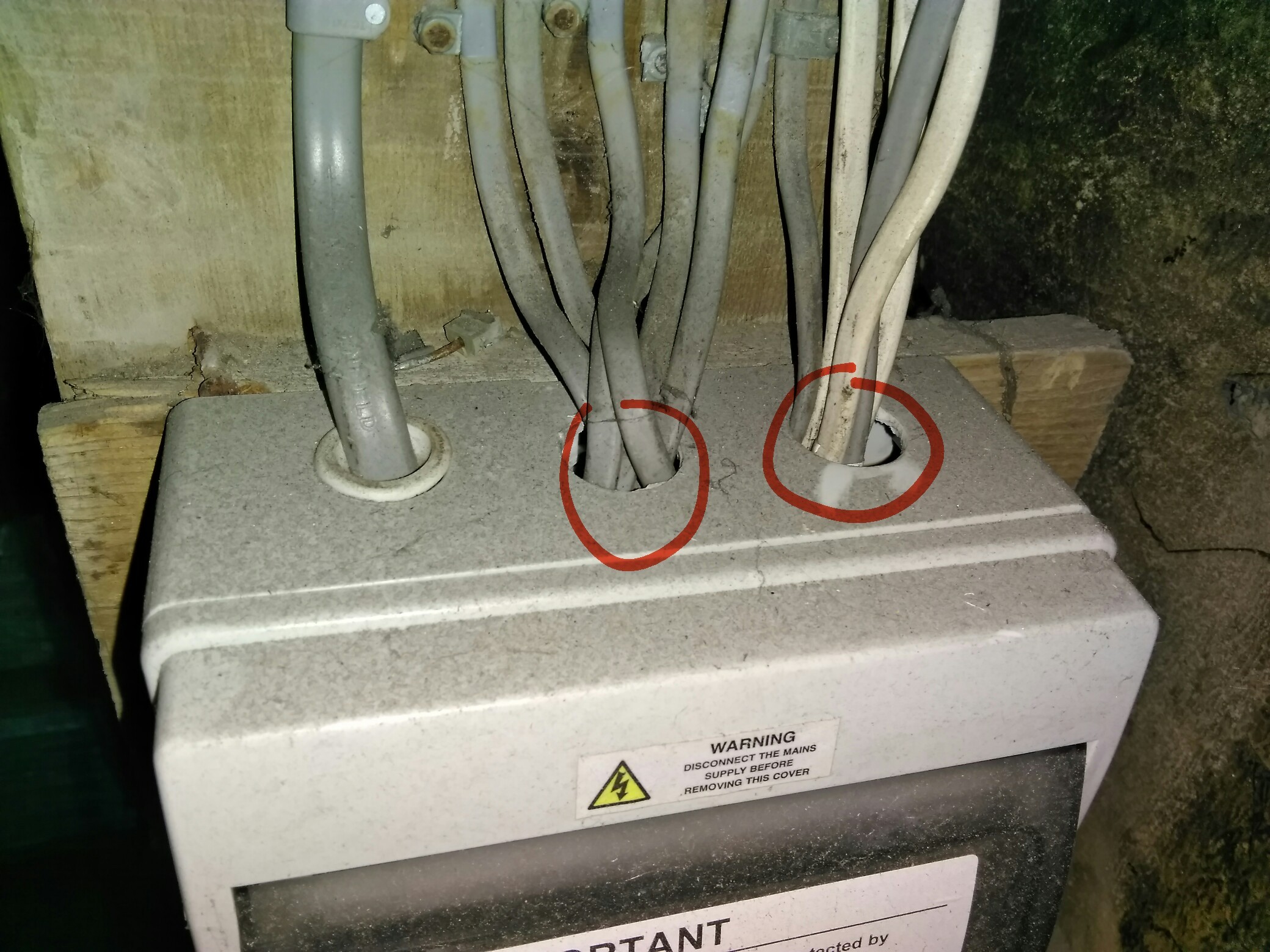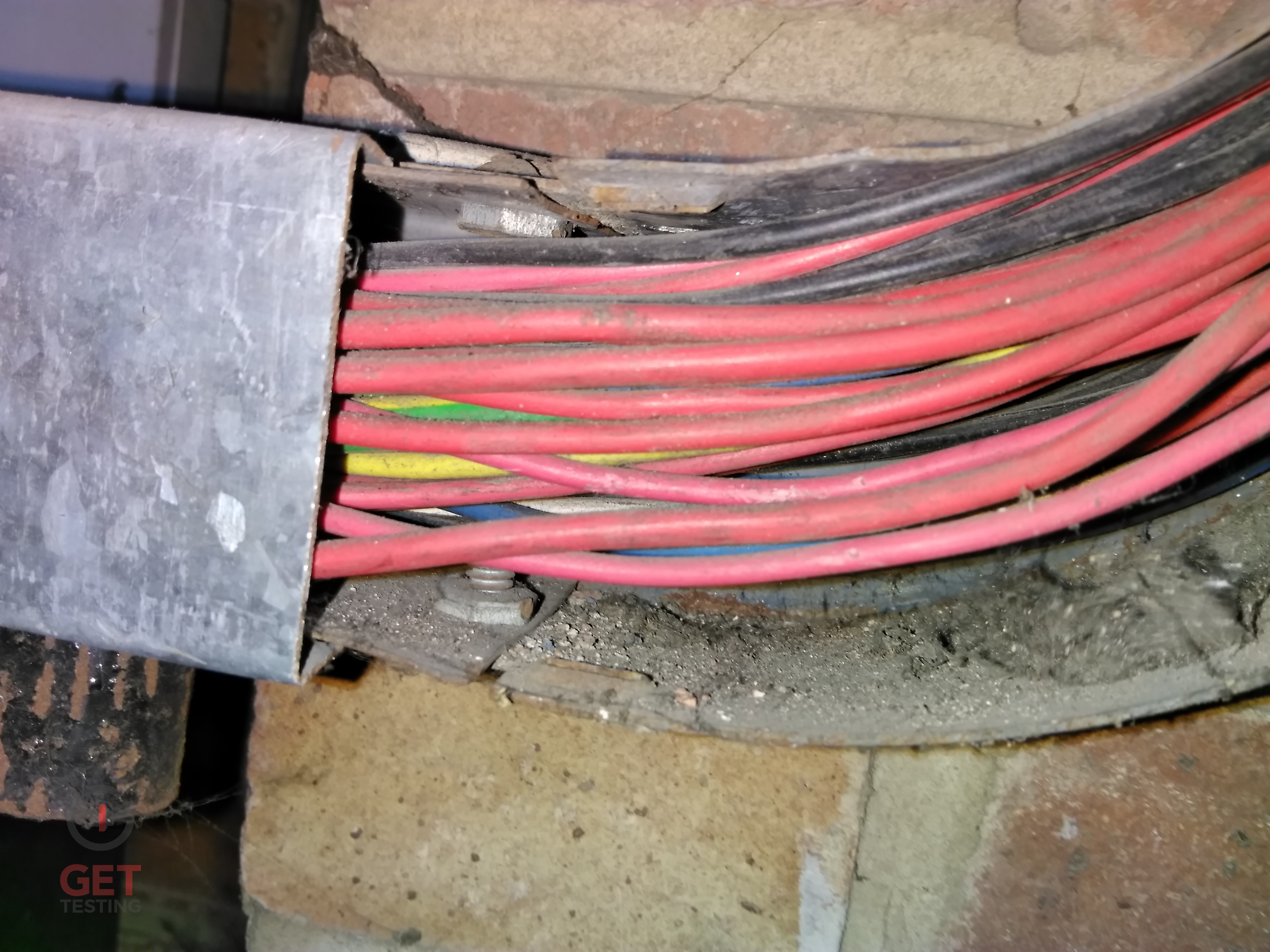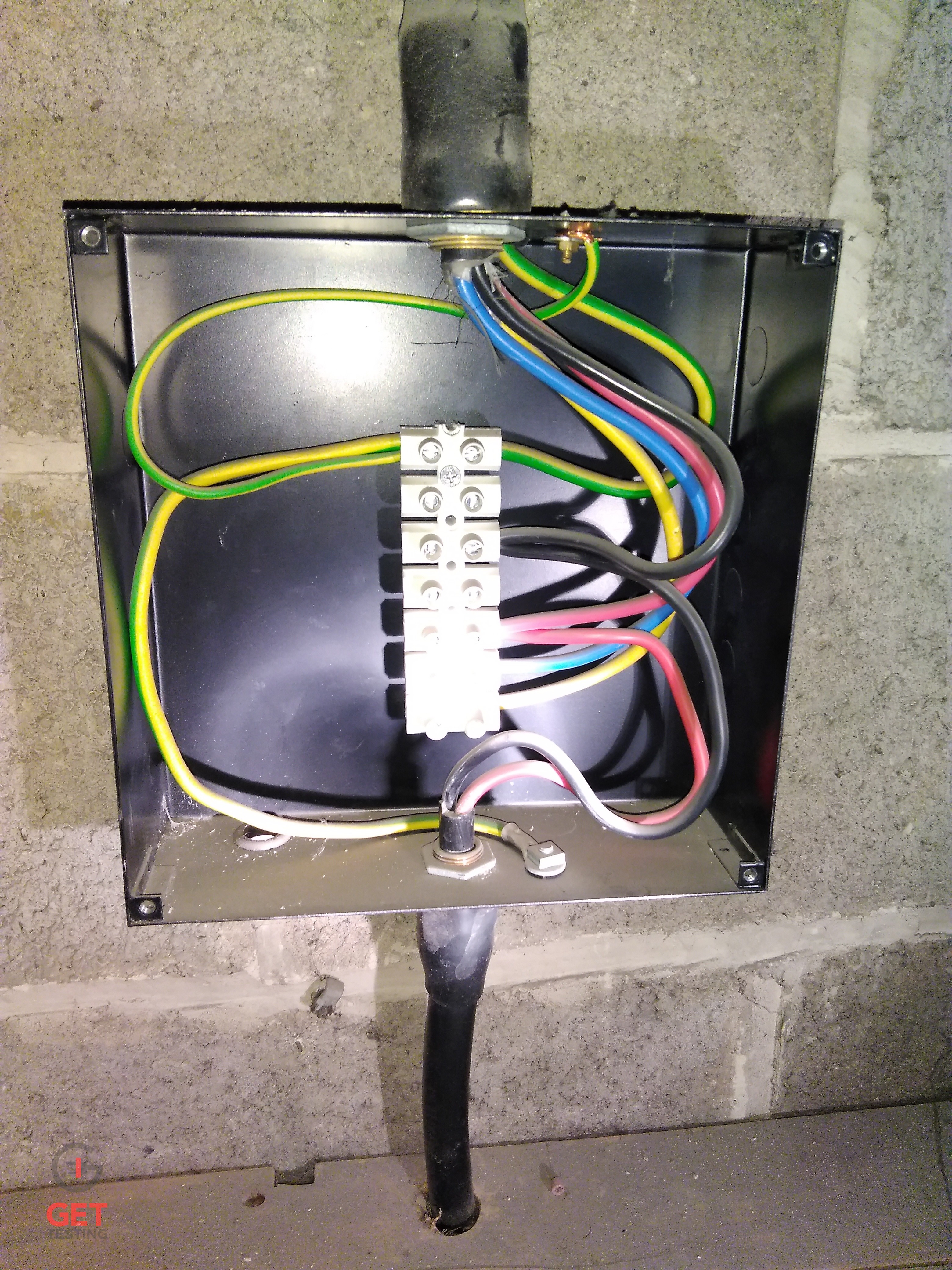Let GetTesting take care of your building’s fixed electrics. EICR (electrical installation condition report) or Fixed Wire Testing involves a set of visual inspections followed by a series of electrical tests that will highlight any potential problems and establish whether your electrics meet the Wiring Regulations or not. With no hidden costs & fixed rates per circuit our simple pricing structure is easy to understand and won’t land you with any hidden surprises.
With £2,000,000 public liability & professional indemnity
Same great service for blue chips or sole traders
We use qualified electricians only
Testing arranged to cause minimum business disruption
Call us today on 01332 460 850 or Get a Quote online
What is an EICR?

Main incoming neutral wasn’t secure into it’s screw terminal
Sometimes known as Fixed Wire Testing, or Periodic Inspection & Testing, this process covers the testing of all the fixed wiring systems within your building, such as mains panels, distributions boards, socket outlets, air conditioning and others.
Quick Quote
It involves a series of stringent visual inspections followed by electrical tests on all systems within a building. It highlights any problems or potential problems, allowing you to plan any necessary maintenance works.
Periodic Testing will involve having to disconnect electrical circuits within the building, so careful planning and management is a necessity to minimise business disruption. It is often best performed outside normal working hours, such as a factory shut-down week, or evening, night-time and weekend testing options are also available.
Why do I need to perform an EICR?
EICRs are carried out to ensure compliance with current electrical wiring regulations. These periodic inspections enable the condition of the electrical system to be determined, as any failures or defects to the design and the safety of the system can be identified and then addressed. You may also be forced to carry out fixed wire testing by a 3rd party, such as your landlord, insurance company or local authority in the case of HMO's and some rental properties.
How often should I carry out an EICR?
| Property Type | Test Frequency | Routine Check |
| Offices | 5 years | 1 year |
| Industrial | 3 years | 1 year |
| Commercial | 5 years | 1 year |
| Shops | 5 years | 1 year |
| Domestic | 10 years* | N/A |
| Residential Accommodation | 5 years* | 1 year |
* Or at change of tenancy, whichever comes first
Do you need to get your EICR up to date? Get in touch to arrange a site visit
Call us today on 01332 460 850 or Get a Quote online
Frequently Asked Questions
If the installation fails, do I need to pay again to retest once the work has been fixed?
No. It’s not like and MOT where the car needs to go back to the same test centre. Upon completion of any remedial works, the electrician will issue a minor works certificate for the issues they have resolved. You keep both of these documents together – one shows the original issue, one shows that it’s been repaired and brought up to standard.
What’s the difference between C1, C2 and C3?
On the report any deviations or non-conformity will be coded as either a C1, C2 or a C3. Each one has a different level reflecting the possible danger of the problem. That should then reflect the urgency these items are dealt with.
C3 – An issue that requires improvement.
C2 – There is a potentially dangerous issue which requires very urgent remedial action.
C1 – There is a real danger present which presents a likely risk of injury. Immediate remedial action is necessary.
Based on the items above the installation will be marked as satisfactory or unsatisfactory. A satisfactory installation contains no issues or only C3s. Any C1s or C2s will mark the installation as unsatisfactory.
What does my EICR tell me?
An EICR is a very detailed report into the condition of your electrical installation. It contains several sections that would not make sense to a non-electrician but the key section is a list of ‘deviations’ – these are items that are not in line with the wiring regulations and require attention. You can use this as a starting point to plan electrical maintenance.
What’s the difference between an EICR and fixed wire testing?
Absolutely nothing. The name has changed over the years with different versions of the wiring regulations but it’s the same thing. Informally it is known as fixed wire testing. It’s previous name which is often used is periodic testing and currently its formal title is an EICR – Electrical Installation Condition Report.
How do I know if my fixed wire testing is due?
There are a couple of indicators that should tell you – firstly, on a new installation or an addition to an existing installation, the designer will have informed you on the certificate when the first EICR should be completed. On an older installation, the previous EICR will indicate in the same way when the next should take place. Also, each consumer unit or distribution board should have a label with the dates of the previous test & the next test due.
How long does an electrical safety check take?
The time taken to perform an EICR can depend on many factors, such as the style of building, whether it’s occupied or not & mostly, how much there is wrong with it that we need to record! However, as a general rule we allow around 1/2 hour per circuit. We’d advise that for a domestic property you, or your tenant, need to set aside 1 day. In most cases we’ll be complete in less than that time, but it needs to be thorough and cannot be rushed.
Commercial & Industrial work will vary from 10 circuits to 1000s, but we can advise on how many engineers will be present and for how long at the quote stage.


